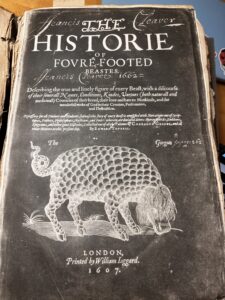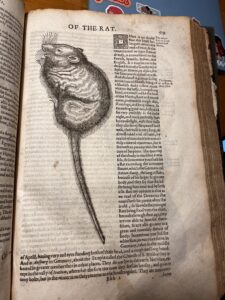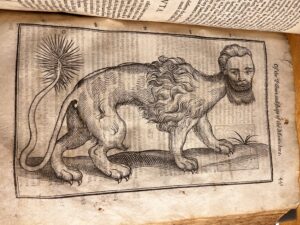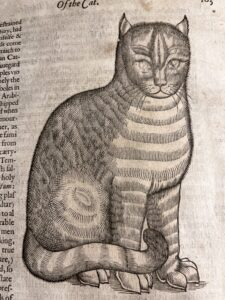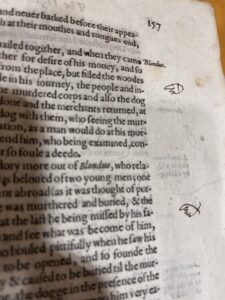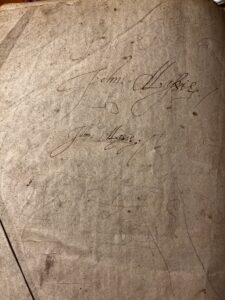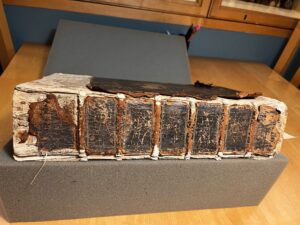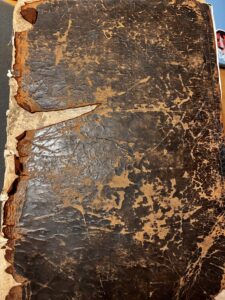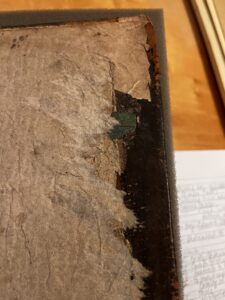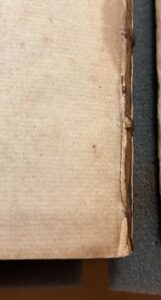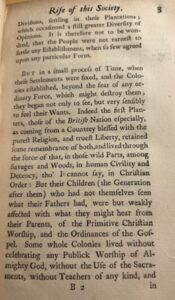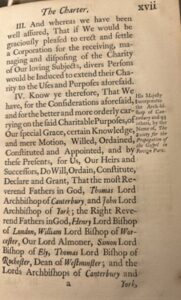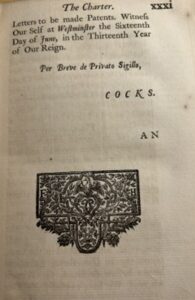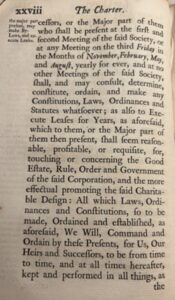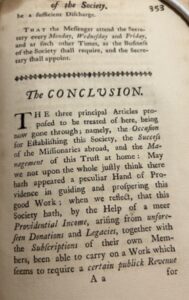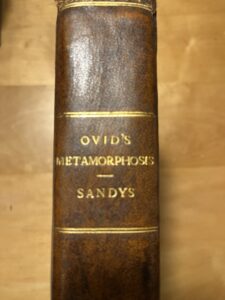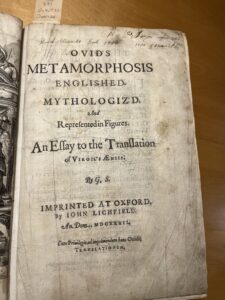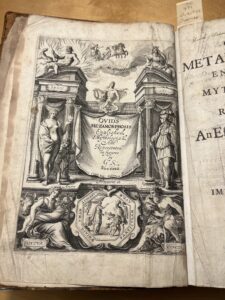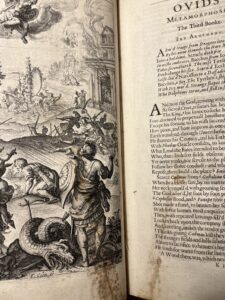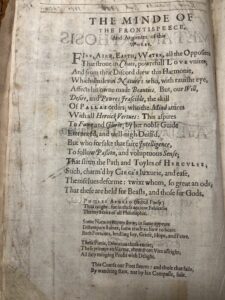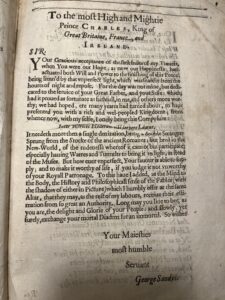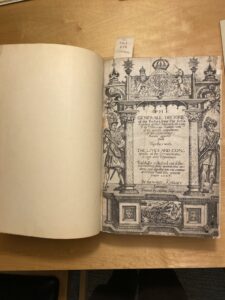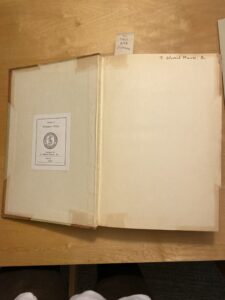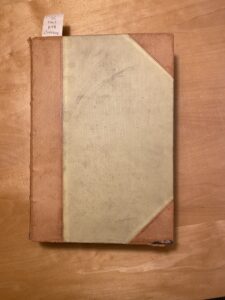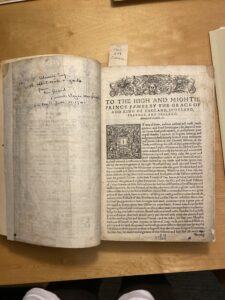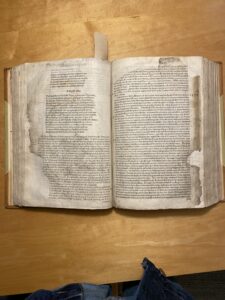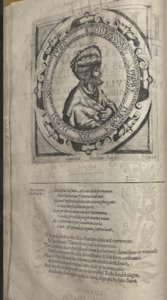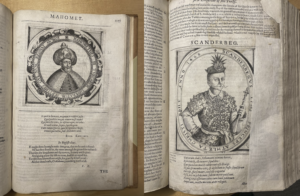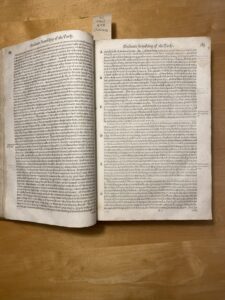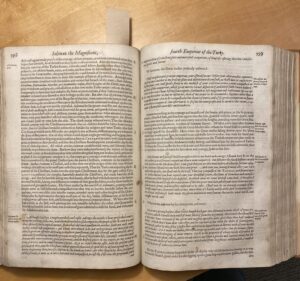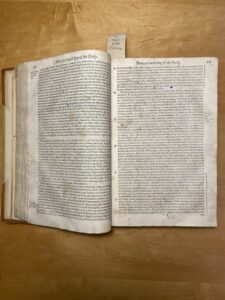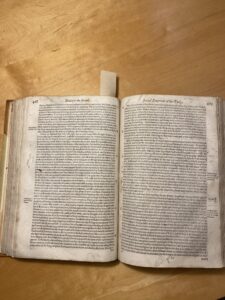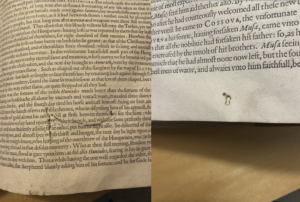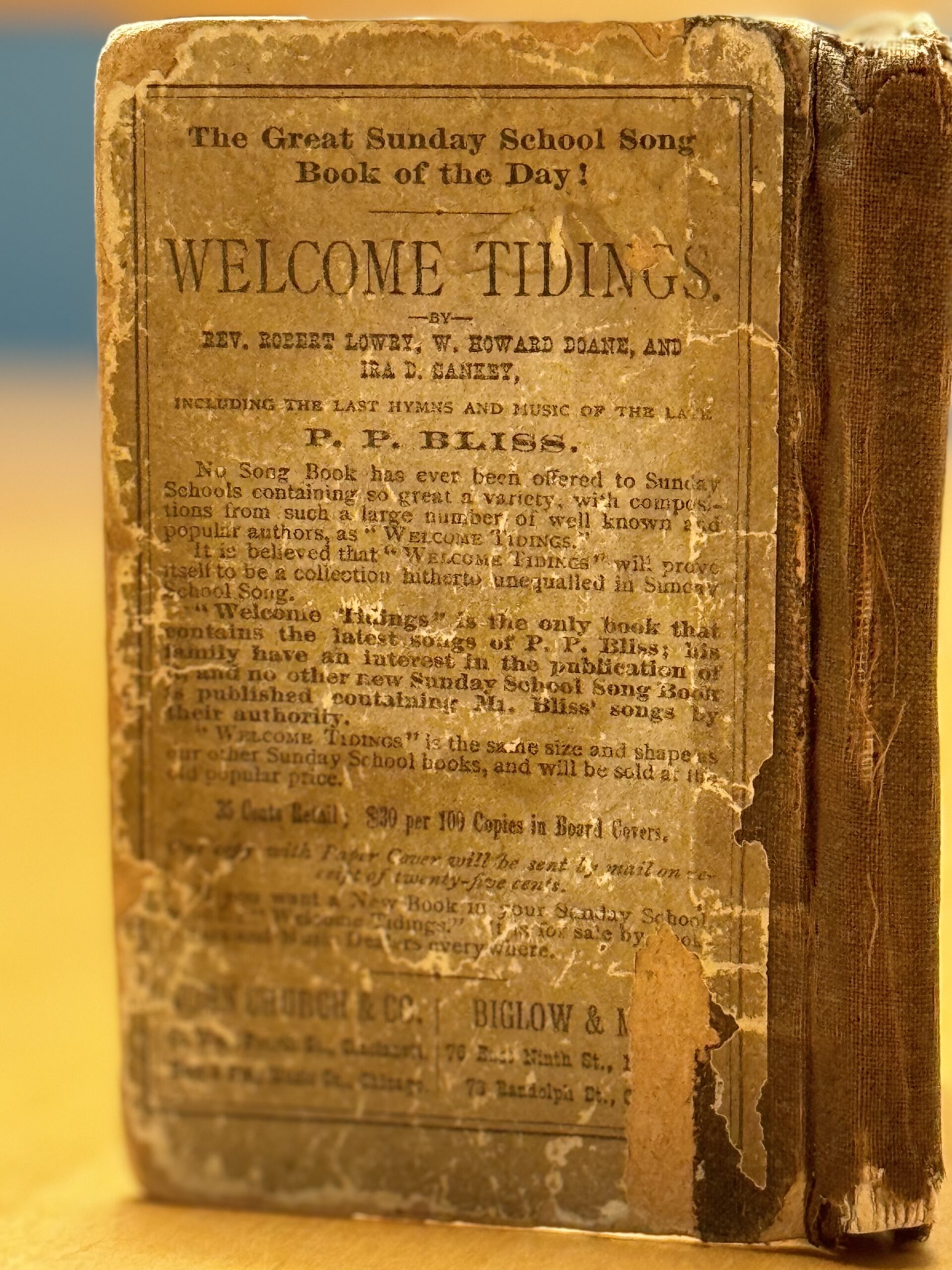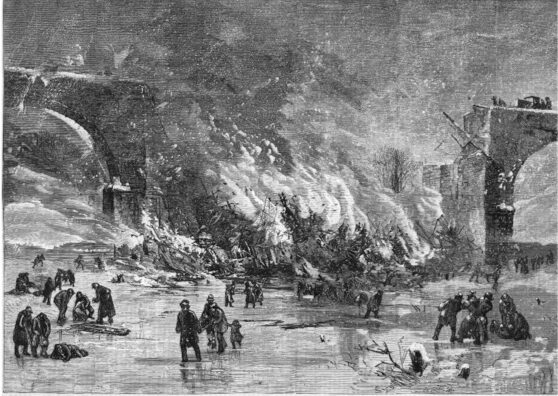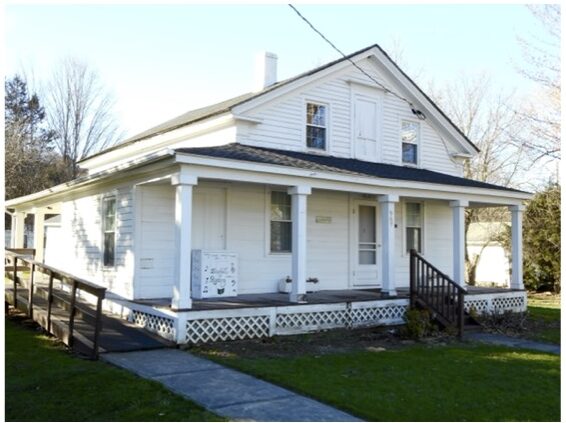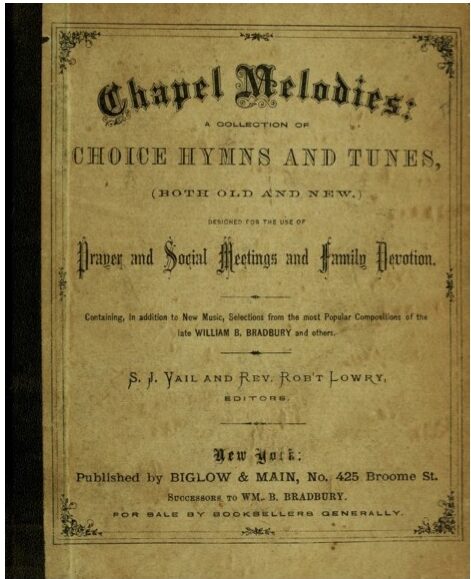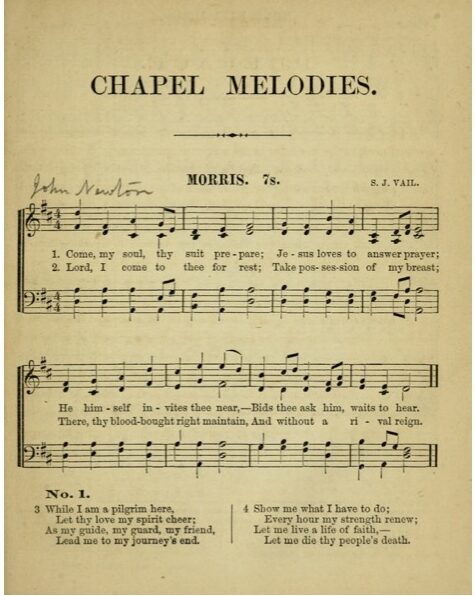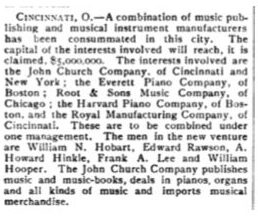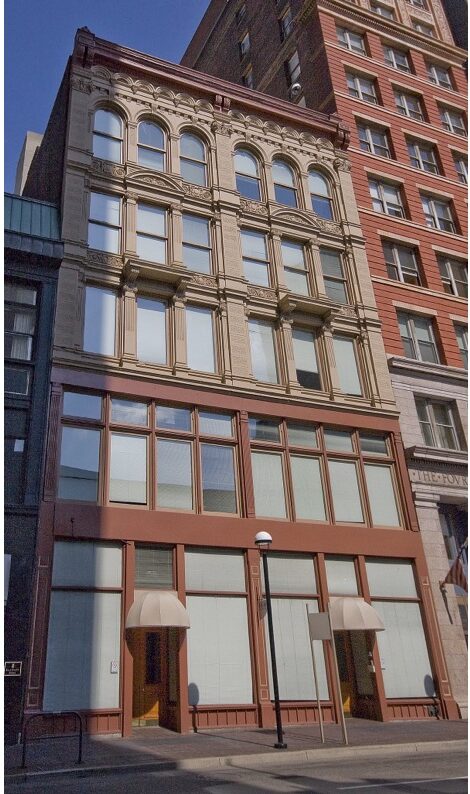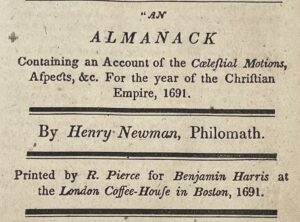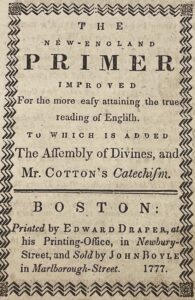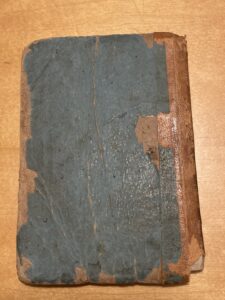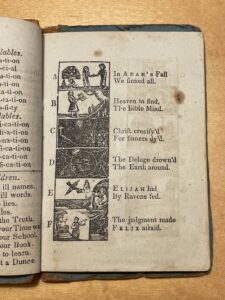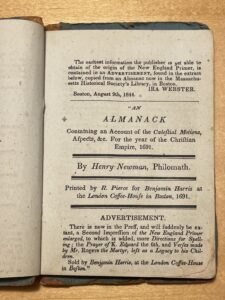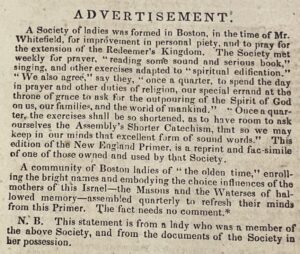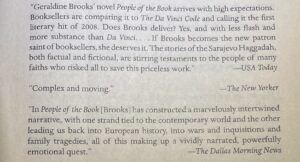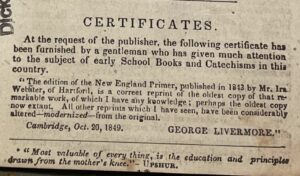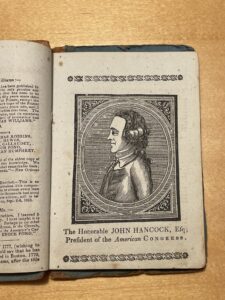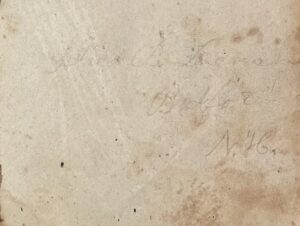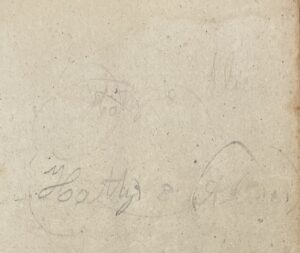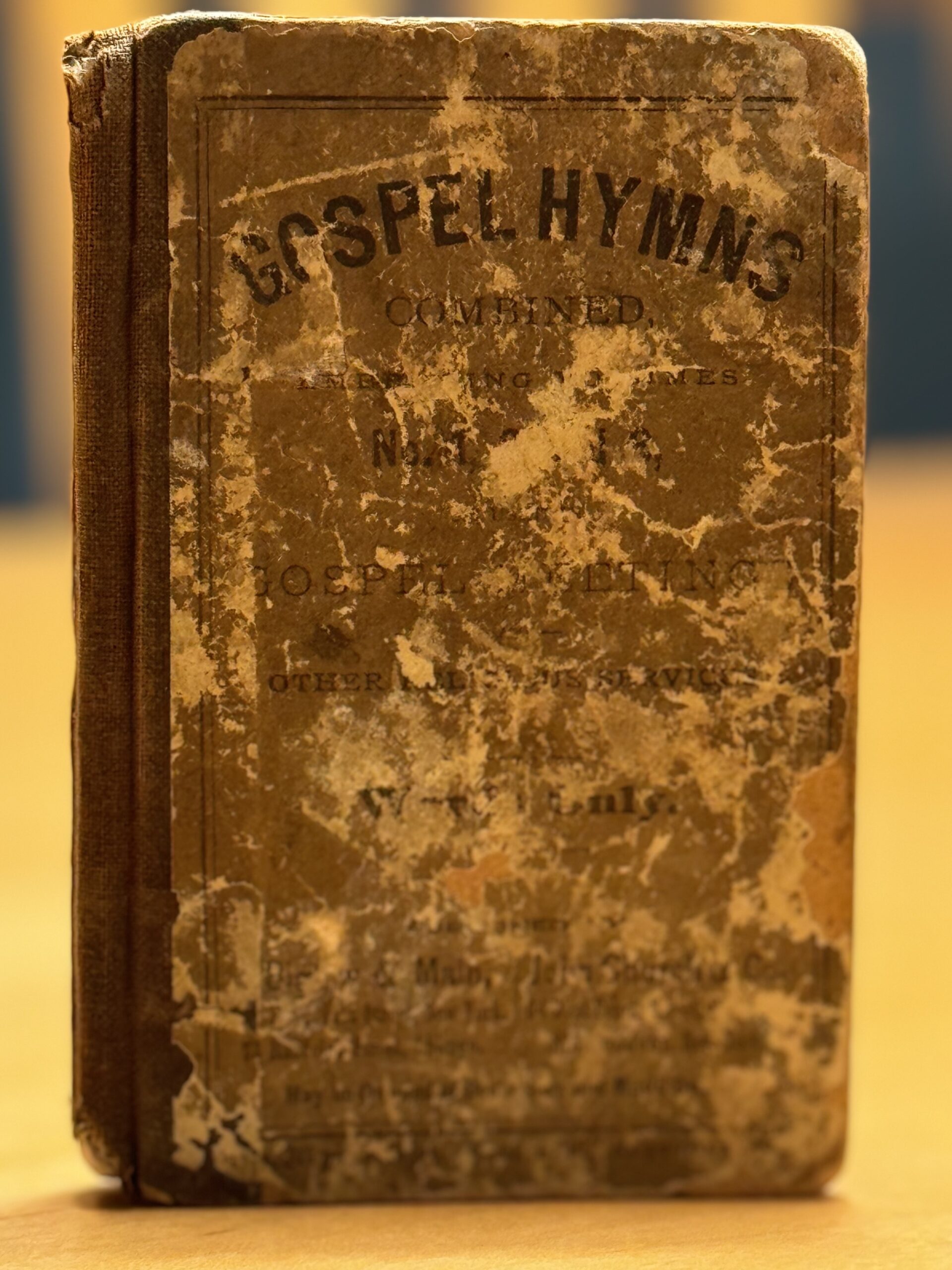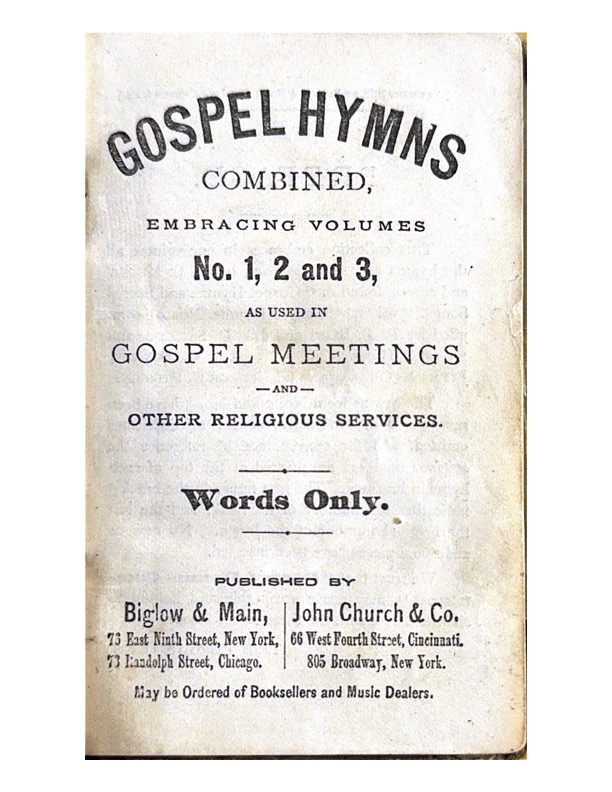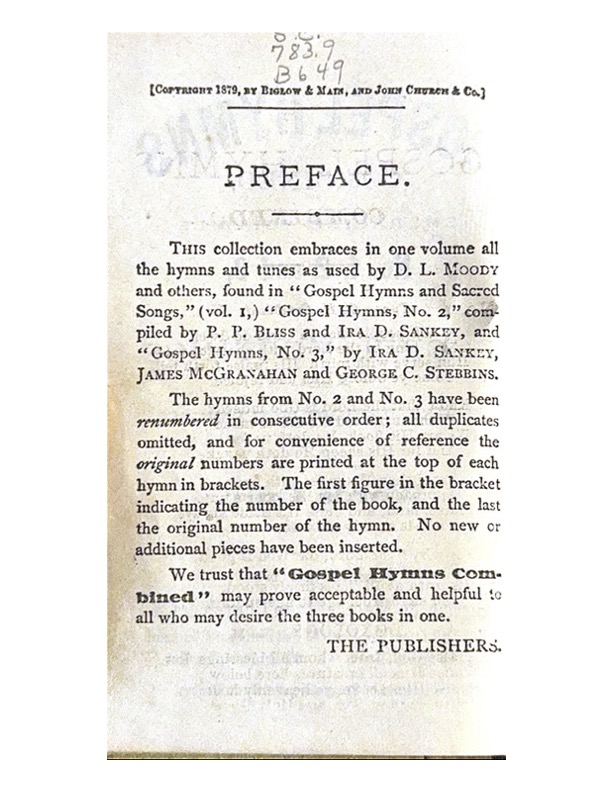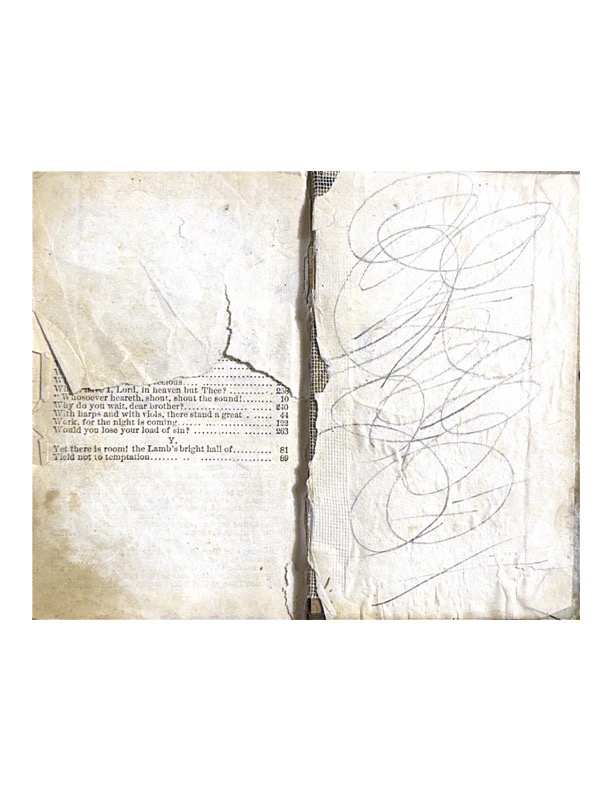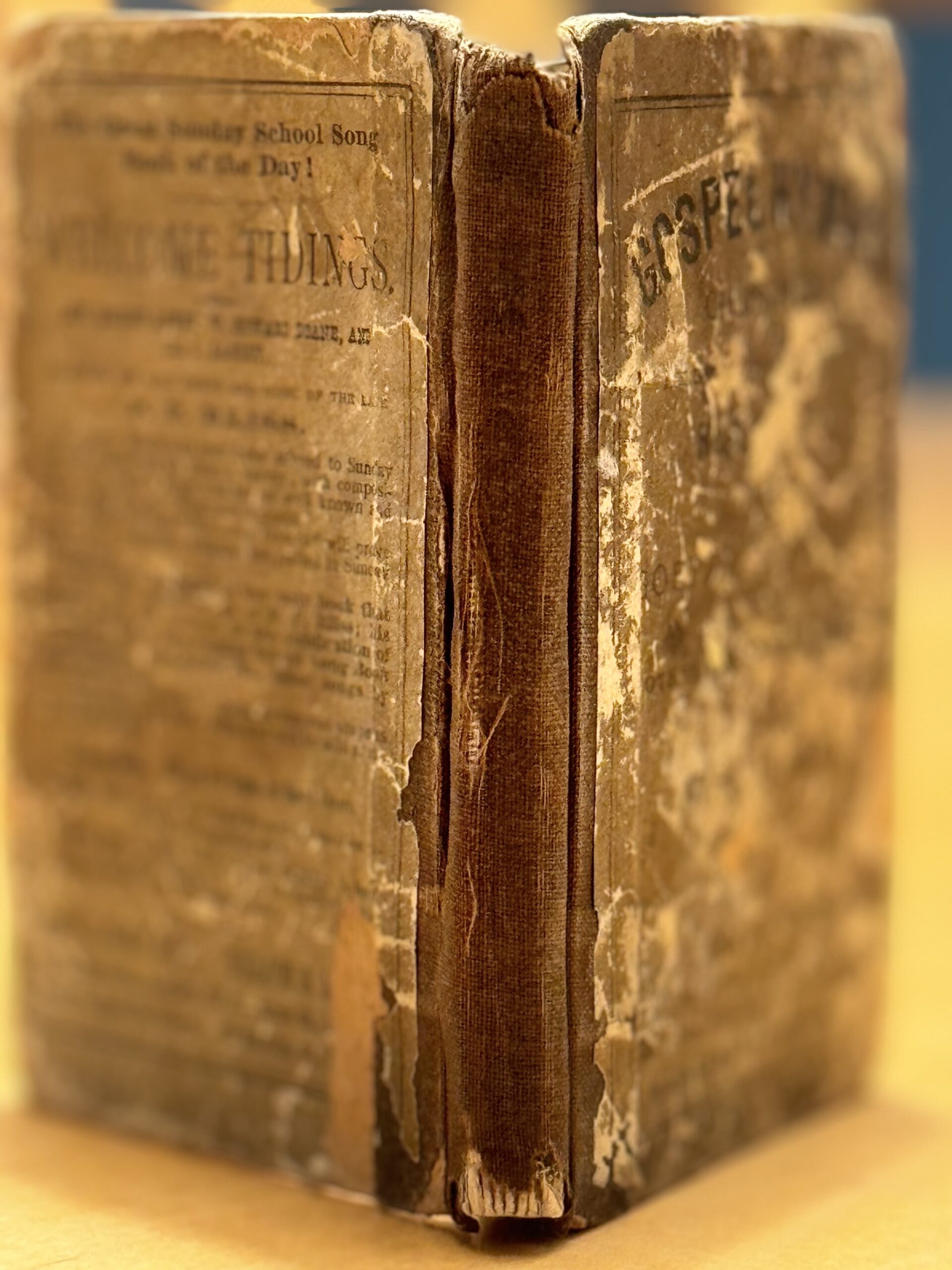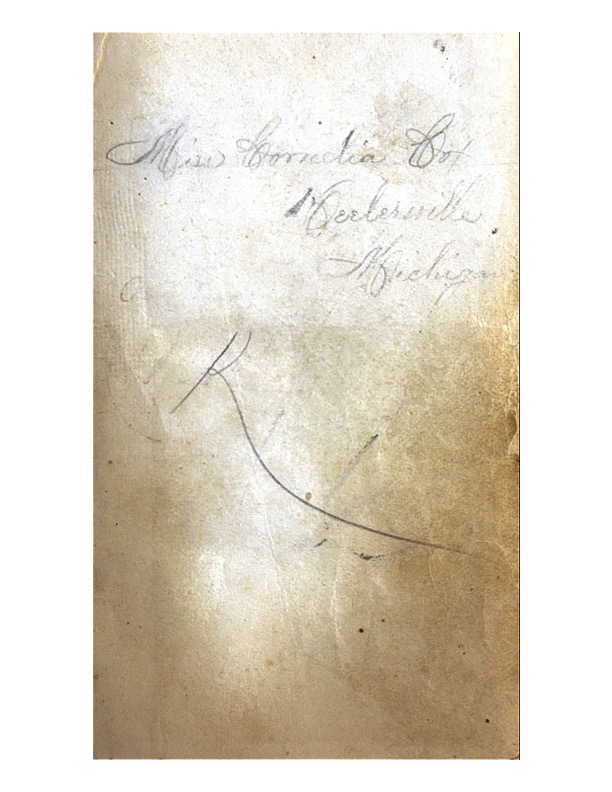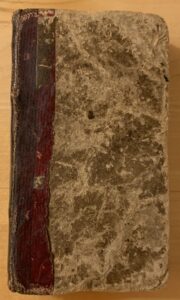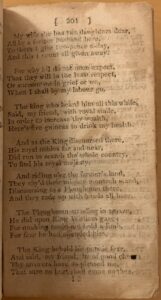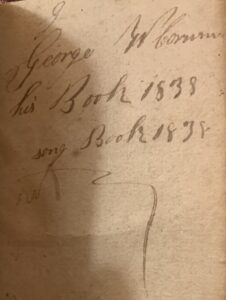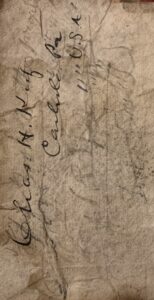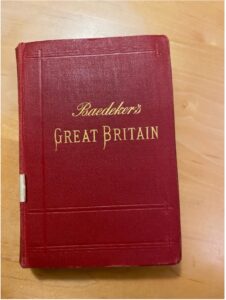
Fig. 1
Baedeker’s Great Britain: A Handbook for Travellers by Karl Baedeker stood out to me because of the maps inside of it – all 22 of them, as well as 58 visual plans of various buildings and one panorama. When I am holding the book, I feel as if I have travelled back in time, looking at maps of 1906 London. The guidebook contains information exactly relevant to when it was written, including hotel recommendations, popular sports, a brief history of the region, etc. Most of the maps are in color and are of the same material paper as the first three title pages in the book (Fig. 2). Although all of the pages are very thin, these pages have a slippery feel, almost as if they are laminated. The few that are black and white, such as the plans to Chichester Cathedral on page 54, as well as the other pages in the guidebook, feel very similar to the paper one could encounter reading a novel of today, except very thin; in many areas, you can see the shadow text of the previous page through the next (Fig. 3). The pages are slightly yellowed, and in some areas, they are folded over or ripped.
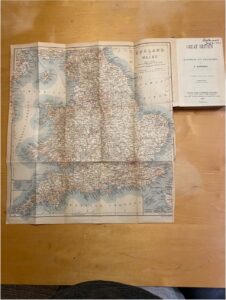
Fig. 2
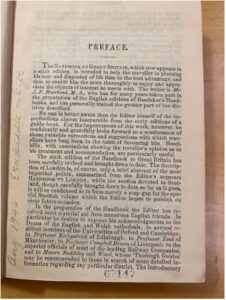
Fig. 3
This Baedeker’s Great Britain is a 6th edition copy published in 1906. It could have been published in three locations: Leipzig, with Karl Baedeker as the publisher; London, by Dulau & Co.; or New York, by Charles Scribner’s Sons. There is no definitive publisher in the title page, and there is no editor listed in the book. Baedeker’s is 4.25 x 6.25 x 1.125 in inches, and 10.8 x 15.9 x 3 in centimeters.
The guide is 606 pages long, plus 66 pages of front matter in Roman numerals. Notably, the several foldout maps within the book are not included among the numbered pages. Every 16 pages there are signature marks, on the first page a number or letter, and on the opposite page the same number or letter accompanied by an asterisk. In the introduction, this is done in lowercase letters and the following pages are done with numbers. Examples include “a” followed by “a*”, or “14” followed by “14*”; there are letters through “e” and numbers through “38” (Fig. 4).
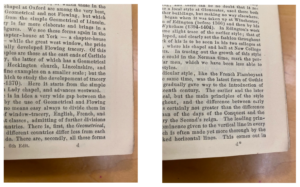
Fig. 4
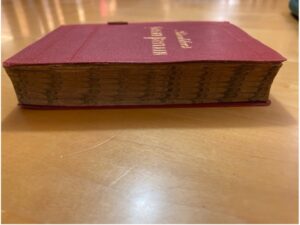
Fig. 5
The book is bound with red cloth, and its title is indented and embossed with gold (Fig.1). There are several other decorative indentations along the cover. The outer pages are decorated with what looks like a faded marbling design (Fig. 5). The decoration looks scalloped, but there are some variations to it. Although it is faded, along the top pages there is some visible color: black, blue, and some red (Fig. 6).
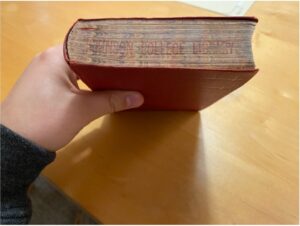
Fig. 6
The binding along the spine of the book has slightly separated from the pages, allowing me to look behind the cover (Fig. 7). It appears to be bound by glue, some form of a connecting or protecting cloth, and staples. Some of these staples are visible through the pages of the book in the index; this was exciting to me because I was expecting thread or something similar, but instead I found metal. Because it is tarnished, I wasn’t certain at first if the staples were thread, but holding the book up to the light caused the few untarnished areas to shine, and seeing behind the spine of the book made it clear to me that they were staples.

Fig. 7
There are also two fabric bookmarks attached to the spine, one in black and one in red, held in two different places in the book (Fig. 8). The red one has been severed from the spine and seems to be held there only by time and the memory of what it is supposed to do. This could suggest that there was more use out of this book than originally assumed, considering that there are very few marks in the book made by human hand. In the middle of the book, I found a bug, pressed between pages 250 and 251 (Fig. 9). Upon further inspection, you can make out legs, antennae, and what could have once been wings. Following that discovery, I found several other small bugs preserved inside the guidebook.
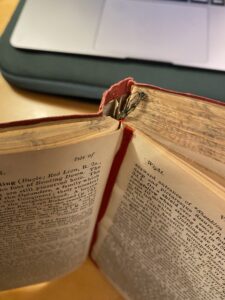
Fig. 8
On the front page directly glued to the cover of the book, there is a sticker that says “Library of Dickinson College”, the college logo, and “Presented by Edward M. Biddle” (Fig. 10). This sticker covers a list labeled “Baedeker’s Guide Books”. On the title page at the top right, written in pen, there is a handwritten notation that says “E. M.. Biddle, July 6, 1907” (Fig. 10). On the following page containing the imprint statements, there is another note, written in pencil, that says the same thing (Fig. 2). The similarities between the handwriting indicate that this was likely written by the same person.
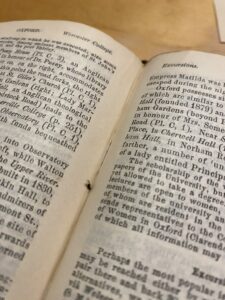
Fig. 10
When I asked the archivist librarians at Dickinson if there were any files on Edward M Biddle, we found a list containing 15 Biddles, all of whom attended Dickinson College. This list has 4 Edward Biddles, three of whom could be Edward M. Biddle. We were able to find a file on one Edward Macfunn Biddle, who graduated from Dickinson in 1904, and directly afterward attended Yale (Fig. 11). It is possible that this was his book. If so, there is no way of knowing how he used it. Other than the two handwritten inscriptions, there is only one other annotation within the guidebook; in the same handwriting it says, “Aug 1946 EMBiddle – Gift” (Fig. 3). Beyond these markings. there are several proclaiming the book to be the property of the Dickinson Library, including the sticker at the front of the book, a red stamp that says “Dickinson College Library” along the top pages (Fig. 10), and a raised indentation on the imprint statement page that says “Dickinson College Library”. There is also a black stamp warning readers that “THIS BOOK MAY NOT BE TAKEN FROM THE LIBRARY”. It’s interesting that there are so many marks from the library; one of them even covers up some of the text. Why might this have felt necessary?
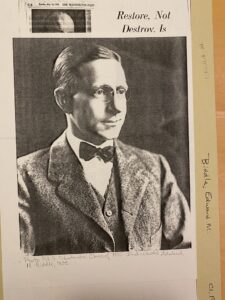
Fig. 11
